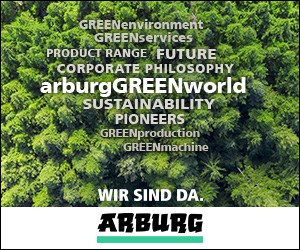Pressure Building in Packaging
Wood On Plastics
There are many packaging related issues that are best solved, or can only be solved, by plastics products. This is where processors should concentrate their efforts.
The price of crude oil on world markets has been on a relentless upswing in recent months, and this is having a profound impact on both suppliers and consumers of plastics packaging. The bad news is that this trend of rising oil prices is not expected to reverse in any significant way for the foreseeable future. The good news is that the high cost of crude oil and its distillates (i.e. gasoline) should raise demand for many types of plastics packaging over the long run.
Looking first at the short-term prospects, the net result of rising oil prices on packaging processors is largely negative. First, resin prices are closely correlated to that of crude oil, and the fact that oil prices are at or near record high levels means that resin prices are also at record highs.
However, the cost of oil has generated a sharp increase in natural gas production in the U.S., and at some point in the not-too-distant future, resin prices will be more affected by the price of natural gas than by the price of crude oil. But this is not the case right now, so processors are still caught in the vice of high materials prices.
Another negative effect of high crude oil prices is that gasoline and diesel fuel prices are also quite high. High gasoline prices diminish the discretionary spending power of consumers and suppress consumer confidence. The high price of diesel fuel raises shipping costs for all types of goods, including consumer non-durables such as food, cosmetics, and health aids.
But not all of the effects of higher energy costs are bad for producers of plastics packaging. In an increasing number of cases, plastics products are far less energy intensive to manufacture than products made from glass, metal, or paper. Plastics products are lighter to ship and easier to fill and process.
Technological advances have recently created plastics packaging that extends shelf life of the package contents, is easier to use for consumers, and requires less refrigeration. Disposal and/or recyclability of plastics are also easier much of the time. All of these issues are made more acute by the continuing increase in oil prices.
Innovation in plastics packaging has accelerated rapidly over the past 10 years, and while this is far from over, it may hit some headwinds in the next few quarters. This is because innovation is directly affected by the amount of research and development in the industry, and these R&D activities are directly affected by profit levels. And as we mentioned earlier, profits are currently experiencing a bit of a squeeze. But this will only slow the innovation cycle, not stop it.
This brings us back full circle to the effects of high energy prices on consumers. As noted, they inhibit consumer spending in the short term. But over the long run it makes consumers far more conscious of issues pertaining to products that are more sustainable, recyclable, and biodegradable.
As most processors know, these are tricky issues because at the very least they involve a complicated three-step process. First, can a material or product be developed that solves all of the problems that are required of a package and still meet one or more of these sustainability objectives? Second, can this new material or product be manufactured on a viable scale? Finally (and perhaps most importantly), will it garner market acceptance? These are complicated issues, but the incentives for solving them increase with each uptick in the price of crude oil.
WHAT THIS MEANS TO YOU
•Many types of plastics packaging are currently under attack (such as bags and water bottles) and are actively being regulated or de-selected. This will continue for the foreseeable future.
•There are many packaging related issues that are best solved, or can only be solved, by plastics products. This is where processors should concentrate their efforts.
•Developing economies in Asia and South America represent huge and largely untapped markets for the next generation of plastics packaging.
Related Content
In Sustainable Packaging, the Word is ‘Monomaterial’
In both flexible and rigid packaging, the trend is to replace multimaterial laminates, coextrusions and “composites” with single-material structures, usually based on PE or PP. Nonpackaging applications are following suit.
Read MoreUS Merchants Makes its Mark in Injection Molding
In less than a decade in injection molding, US Merchants has acquired hundreds of machines spread across facilities in California, Texas, Virginia and Arizona, with even more growth coming.
Read MoreFormulating LLDPE/LDPE Blends For Abuse–Resistant Blown Film
A new study shows how the type and amount of LDPE in blends with LLDPE affect the processing and strength/toughness properties of blown film. Data are shown for both LDPE-rich and LLDPE-rich blends.
Read MorePregis Performance Flexibles: In the ‘Wow’ Business
Pregis went big and bold with investment in a brand-new, state-of-the-art plant and spent big on expanding an existing facility. High-tech lines, well-known leadership and a commitment to sustainability are bringing the “wow” factor to blown film.
Read MoreRead Next
Processor Turns to AI to Help Keep Machines Humming
At captive processor McConkey, a new generation of artificial intelligence models, highlighted by ChatGPT, is helping it wade through the shortage of skilled labor and keep its production lines churning out good parts.
Read MoreHow Polymer Melts in Single-Screw Extruders
Understanding how polymer melts in a single-screw extruder could help you optimize your screw design to eliminate defect-causing solid polymer fragments.
Read MoreUnderstanding Melting in Single-Screw Extruders
You can better visualize the melting process by “flipping” the observation point so that the barrel appears to be turning clockwise around a stationary screw.
Read More






















